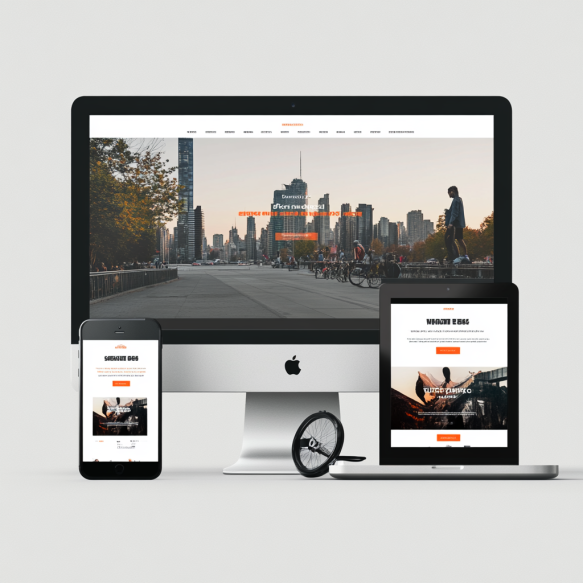What Are the Best Practices for Website Optimization and Design?
When it comes to optimizing your website, ensuring it is tailored for success is key. From user-friendly layouts to seamless navigation, every detail matters. But what about the lesser-known strategies that could take your site to the next level? Stay tuned to discover the essential elements that can transform your website into a high-performing, visually appealing platform that keeps users coming back for more.
Key Takeaways
- Optimize images and code for faster loading times.
- Prioritize mobile responsiveness for a seamless user experience.
- Utilize clear CTAs and intuitive navigation for user guidance.
- Incorporate personalized features for enhanced user engagement.
- Regularly review and adjust strategies for optimal performance.
Website Optimization Importance and Benefits
Understanding the significance and advantages of website optimization is paramount for achieving online success in today’s digital landscape. By optimizing your website, you enhance its visibility, user experience, and overall performance. Website optimization contributes to improved search engine rankings, driving more organic traffic to your site. This increased visibility can lead to higher conversion rates, ultimately boosting your online presence and revenue.
Optimizing your website also helps in building credibility and trust with your audience. A well-optimized site provides a seamless and engaging user experience, making it more likely for visitors to stay longer and explore your content. Additionally, optimized websites load faster, reducing bounce rates and keeping users engaged.
Furthermore, website optimization allows you to stay competitive in your industry by adapting to the ever-changing digital landscape. It enables you to keep up with the latest trends and technologies, ensuring that your online presence remains relevant and appealing to your target audience.
UX Web Design Tips
How can you implement effective UX web design practices to enhance user experience on your website?
Start by incorporating straightforward menus at the website header and footer for easy navigation.
Ensure that your website includes visible Call-to-Action (CTA) buttons to guide users through conversion steps.
Utilize high-quality visuals and optimize images to enhance the overall aesthetic appeal and loading speed of your site.
Improve the sales funnel by strategically placing elements that encourage user interaction and progression through the site.
To gain insights into your website’s performance, utilize tools like PageSpeed Insights and GTmetrix to identify areas for improvement.
These tools can help optimize loading times and overall user experience.
Remember, the key to effective UX web design is to create a seamless and engaging experience for your site visitors.
Website Speed Optimization Strategies
To optimize your website speed effectively, focus on implementing strategic speed optimization strategies that enhance user experience and improve SEO performance. Begin by removing unnecessary characters and spaces from your website’s code to streamline its loading process.
Setting up a content delivery network (CDN) can distribute your content across various servers globally, reducing latency for users. Utilize software or plugins designed for static page fixes to enhance loading speed further.
Optimizing images is crucial for faster loading times; ensure they’re compressed without compromising quality. Monitoring your site speed using tools like PageSpeed Insights allows you to track performance and make necessary improvements.
Remember to regularly review and adjust your speed optimization strategies to keep up with evolving web standards and technology. By prioritizing website speed, you not only provide a better user experience but also boost your site’s visibility in search engine rankings.
Mobile Responsiveness Best Practices
Mobile responsiveness is a critical aspect of modern website design, ensuring optimal user experience across various devices.
To prioritize mobile responsiveness, select responsive themes that adapt seamlessly to different screen sizes.
Ensure straightforward navigation by simplifying menus and utilizing clear CTA buttons for easy interaction.
Use concise meta titles to convey information effectively and place CTA buttons strategically to guide users towards desired actions.
Leveraging website builders designed for mobile-responsive sites can streamline the process and ensure consistency across platforms.
By adhering to these best practices, you can enhance user experience on mobile devices, fostering a sense of belonging and engagement for your audience.
Personalization and Accessibility Techniques
Implement personalized features and accessibility enhancements to tailor your website experience for diverse user needs. Personalization techniques can enhance user engagement by providing customized content based on preferences and past interactions. Utilize geotargeting to offer location-specific information, targeted offers, and product recommendations. This approach increases visitor retention and satisfaction by delivering relevant content.
Accessibility is vital for ensuring all users, including those with disabilities, can access and navigate your site effectively. Incorporate features like alternative text for images, color contrast for readability, and headings for structure. Additionally, provide closed captions for videos to cater to users with hearing impairments. By improving accessibility, you create a more inclusive online environment that prioritizes user experience for everyone.
Frequently Asked Questions
How Can I Improve Website Accessibility for Users With Disabilities?
To improve website accessibility for users with disabilities, ensure alt text for images, proper heading structure, keyboard navigation, and color contrast. Conduct usability tests with assistive technologies. Make your site inclusive to all.
What Are the Key Elements of an Effective Personalization Strategy?
To create an effective personalization strategy, focus on user preferences, behavior, and demographics. Utilize geotargeting, targeted offers, and product recommendations. Enhance user experience with customization for increased engagement and retention. Monitor feedback for continuous improvement.
How Do I Ensure My Website Is Optimized for Voice Search?
To optimize your website for voice search, focus on long-tail keywords, provide clear answers, aim for featured snippets, use natural language, and ensure mobile compatibility. These steps enhance visibility and accessibility for voice search users.
What Security Measures Should I Prioritize for My Website?
When securing your website, prioritize regular updates, data backups, strong passwords, SSL certificates, and monitoring for malware and cyber threats. Implement these security measures to safeguard your online presence and protect user data.
How Can I Effectively Integrate Email Marketing Into My Website Optimization Strategy?
To effectively integrate email marketing into your website optimization strategy, segment your email list, personalize campaigns, craft compelling subject lines, optimize for mobile viewing, and monitor performance metrics. Utilize these steps for enhanced user engagement.
Conclusion
In conclusion, implementing best practices for website optimization and design is essential for enhancing visibility, improving user experience, and increasing overall performance.
By incorporating straightforward menus, visible CTAs, high-quality visuals, and optimizing images, you can create a successful and user-friendly website.
Utilizing strategic placements, performance tools, and regularly reviewing speed optimization strategies will help drive organic traffic, boost conversion rates, and build credibility with your audience.
Make sure to prioritize mobile responsiveness, personalization, and accessibility techniques for a well-rounded approach to website optimization.

